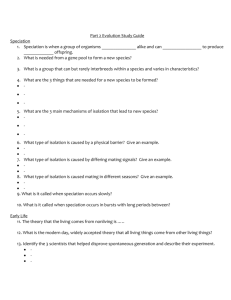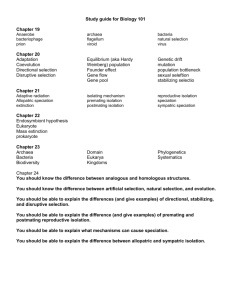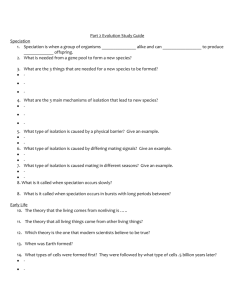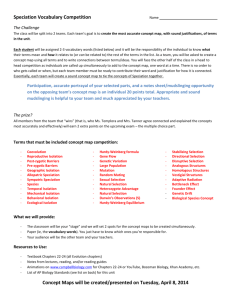Behavioral isolation - ScienceWithMrShrout
advertisement
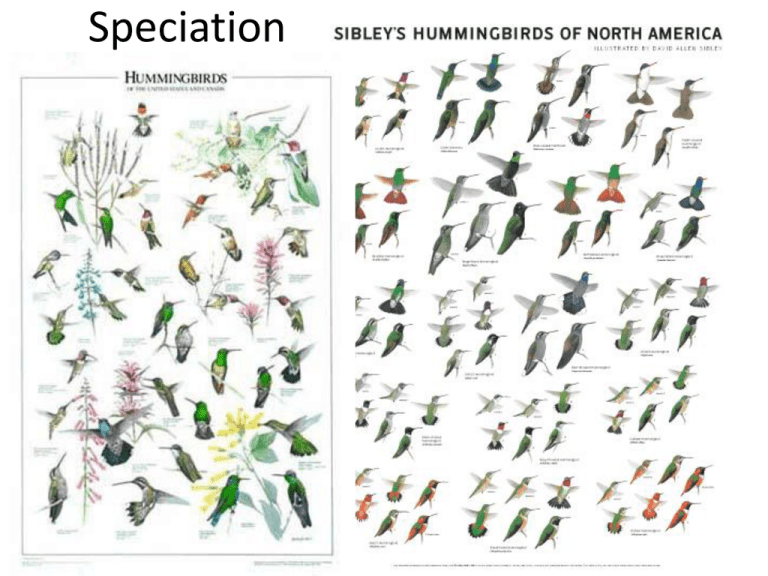
Speciation Speciation • Speciation = formation of new species • Species = group of organisms that breed with one another and produce fertile offspring in nature (share a common gene pool) Speciation can happen in two modes • Modes of speciation: – Sympatric: new species develop in same geographic region • Sym= same – Allopatric: new species develop in separate regions • allo= other Isolation isn’t always bad… • As new species evolve, populations become reproductively isolated from each other: When 2 populations cant breed and produce fertile offspring, resulting in separate gene pools – Behavioral isolation: Capable of breeding, but have different courtship rituals or behaviors – Geographic isolation: Separate by geographic barriers – Temporal isolation: Reproduce at different times Geographic Isolation (allopatric) • Two populations are separated by geographic barriers. Over time different pressures result in distinct species – Rivers, mountains, bodies of water, glaciers, deserts Behavioral Isolation • Differences in the behavior of two populations prevent mating • Because there is no gene exchange between populations, evolution occurs • Behaviors: – Mating rituals – Mate preference – Mate calling Behavioral Isolation (sympatric) Temporal Isolation (sympatric) • Two or more populations are separated by the time of year/day that reproduction occurs – Nocturnal vs Diurnal mating – Seasonal mating differences Speciation can happen at two different rates • Gradualism: Evolution occurs slowly, gradually and continuously • Punctuated Equilibrium: Species remain unchanged for long periods of time. During certain events, species undergo rapid evolution. • Both of the processes above have likely happened Speciation of Darwin’s Finches • Speciation in the Galapagos finches occurred by: – Founding a new population: A small population of finches migrates to a different island – Geographic isolation: Finches don’t usually fly over open water, so stayed on own island (separate gene pool) – Changes in the new population’s gene pool: Adapted to new environment (directional selection) to be more fit – Reproductive isolation: Differences in phenotypes and mating rituals may turn different finches off to one another – Ecological competition: Similar finches compete, so individuals that are most different from each other have the highest fitness, because less competition. – Continued Evolution: Process repeats and over many generations, it produced the 13 different finch species


